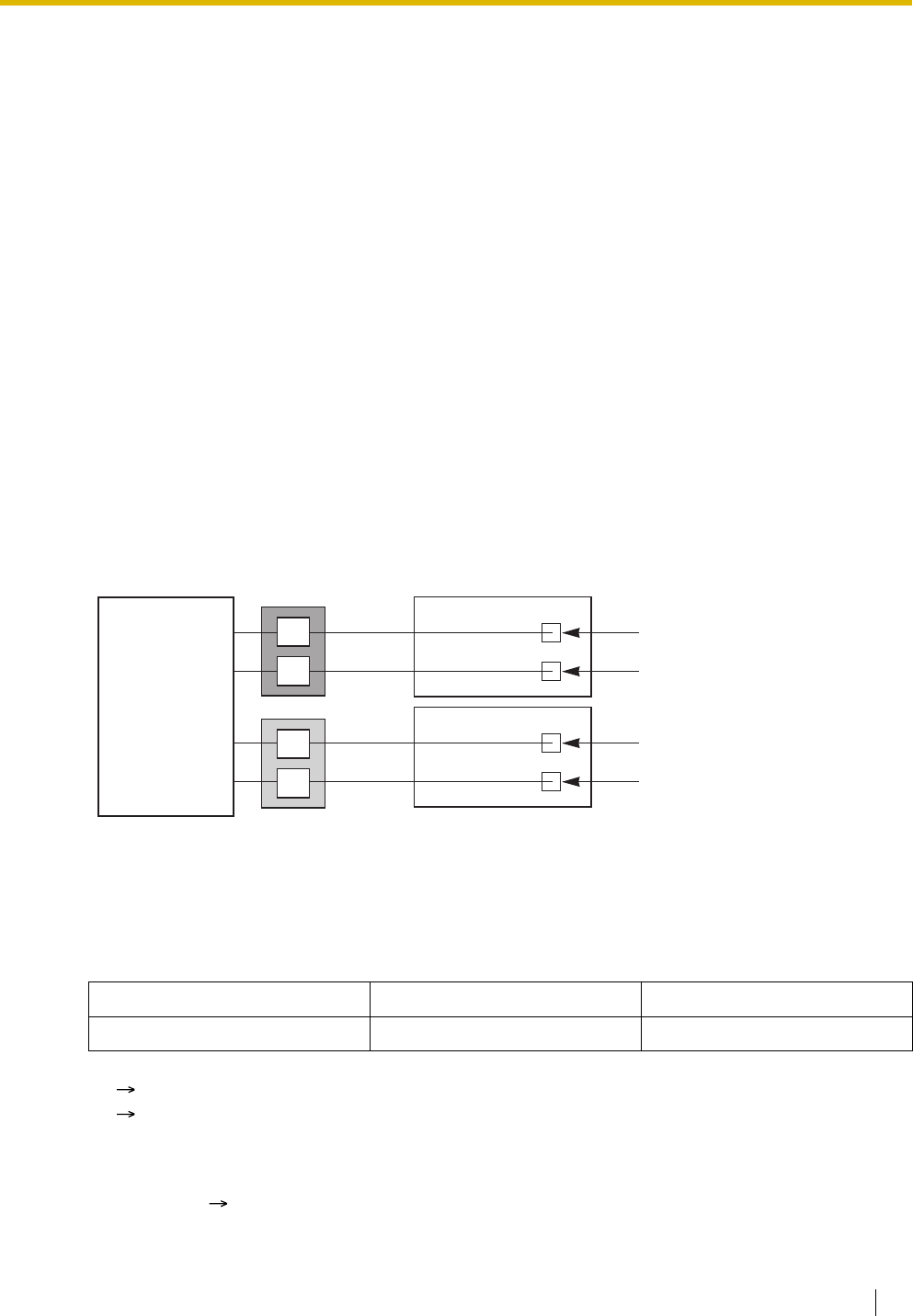
1.19 Voice Mail Features
Feature Guide 143
1.19 Voice Mail Features
1.19.1 Voice Mail APT Integration
Description
A Panasonic Voice Processing System (VPS) that supports APT Integration can provide many features and
conveniences that are unachievable using traditional voice mail systems that rely on Inband (DTMF)
Integration.
Many of these features are explained below. For more information, refer to the Installation Manual supplied
with the Panasonic VPS.
1. Automatic Configuration—Quick Setup (or DIP switch initialisation without a PC)
The PBX shares information with the VPS during setup that allows the VPS to automatically create the
appropriate mailboxes for all extension numbers.
The following settings to enable APT Integration must be programmed through system programming to
match the settings of the VPS.
When 2 VPSs are connected to the PBX, note that each extension can have only one mailbox, but when
the VPSs have executed Automatic Configuration, an extension has a mailbox in both VPSs. Therefore,
an extension user must delete a mailbox in either VPS so that there are no duplicates.
This example uses a Panasonic KX-TVP50 series VPS, which can be connected with 4-conductor wire
to 4 extension jacks of the PBX.
[Programming Example: Voice Mail Table]
In this example:
When "Port 7 & 8" is selected for VPS1, extension jacks 07 and 08 are placed in extension group 7
automatically ( Extension Group [600]). Likewise, when "Port 15 & 16" is selected for VPS2,
extension jacks 15 and 16 are placed in extension group 8 automatically. Each extension group can be
APT Integration
VM 1 APT Port*
1
VM 2 APT Port*
2
Enable Port 7 & 8 Port 15 & 16
*
1
VM 1 APT Port [130]
*
2
VM 2 APT Port [131]
PBX
VPS
7
Port 1
Port 2
VPS
Port 1
Port 2
15
16
8
Extension
group 7
Extension
group 8


















